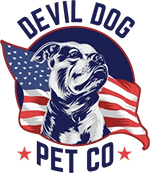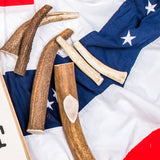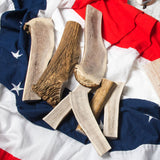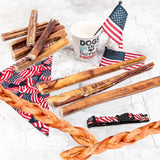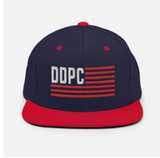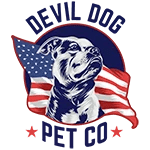Yak Chews: The Ultimate Guide for Power Chewers
When our dog Dexter decided my favorite boots were chew toys, I knew I needed a solution fast. That moment of finding shredded leather taught me what many dog owners learn the hard way: dogs need appropriate outlets for their natural chewing instincts. Enter yak chews – the game-changing, long-lasting treats that have saved countless shoes, furniture pieces, and dog-owner sanity.
Yak chews aren't just another pet-store gimmick. They're hard-cheese treats with centuries of Himalayan tradition behind them, offering a perfect balance of durability and safety that few alternatives can match. For owners of power chewers especially, these treats are essential tools in your dog-leadership arsenal.
What Makes Yak Chews Different from Other Dog Treats?
Most commercial dog treats either disappear in seconds or present serious health risks. Rawhides can cause blockages, plastic toys get destroyed, and antlers may be too hard on your pup. Yak chews occupy that sweet spot – hard enough to last, but designed to gradually soften as your dog works on them.
Let's be clear: yak chews are hard but not indestructible, and that’s by design. On the chew-hardness scale they rank below antlers, making them tough enough for determined chewers while being safer for their teeth. Quality Himalayan yak chews come in one hardness level only – no “extra hard” varieties that might risk dental health.
The Traditional Himalayan Process
- Combining yak milk (sometimes with cow milk)
- Adding a small amount of salt and lime juice
- Removing most of the lactose during processing
- Pressing the cheese into blocks
- Smoking and drying for weeks
The result? A hard, protein-rich, low-fat treat that dogs go crazy for – all-natural, with no chemicals, preservatives, or artificial ingredients.
5 Reasons Power Chewers Need Yak Chews in Their Arsenal
1. Unmatched Durability for Determined Chewers
If your dog turns other treats into confetti within minutes, yak chews will be a revelation. Their dense composition means most dogs need multiple sessions to work through a single chew. One customer’s German Shepherd – a notorious destroyer – took three weeks to finish a large yak chew. Remember: they last longer than most treats, but they will eventually wear down.
2. Dental Health Benefits While They Chew
- The hard surface scrapes away plaque and tartar
- Chewing action stimulates gums
- Extended chewing increases saliva, neutralizing mouth acids
- Natural enzymes in the cheese help break down bacteria
A customer recently shared how their vet noticed improved dental health after just two months of regular yak-chew sessions. While not a replacement for professional care, they’re an excellent supplement.
3. Nutritional Powerhouse for Active Dogs
- Over 50 % protein content
- Typically under 1 % fat
- Rich in calcium for bone health
- Free from common allergens
- No artificial preservatives or colors
4. Anxiety Reduction & Mental Stimulation
Extended chewing releases endorphins that naturally calm anxious dogs. Beyond anxiety relief, the challenging texture offers mental stimulation – chewing engages their minds as well as their jaws.
5. Safety Profile Superior to Most Long-Lasting Alternatives
Durable chews often come with risks:
- Rawhides can cause intestinal blockages
- Antlers may be too hard for senior dogs and young pups
- Plastic toys can contain BPA or phthalates
- Compressed vegetable chews sometimes hide questionable ingredients
Yak chews, by contrast, are fully digestible and don’t splinter, so you know exactly what your dog is consuming.
The Right Size Matters: Choosing Yak Chews for Your Dog
Selecting the proper size is critical for safety and value.
- Small: dogs under 25 lbs
- Medium: 25–35 lbs
- Large: 35–65 lbs
- Extra Large: 65-85 lbs
- Monster/Beast size: 85lb+
Always size up if your dog is between categories or is a particularly aggressive chewer.
Power-Chewer Pro Tips
- Introduce during calm times – not right after play.
- Supervise initial sessions to establish proper chewing habits.
- Rotate between multiple chews to prevent boredom.
- Create a dedicated “chew spot” in your home.
- Remove the chew when significantly softened.
The Safety Protocol Every Owner Must Know
The Critical Microwave Technique
When the chew is reduced to about 1–2 inches or the entire piece fits in their mouth:
- Microwave for 50–60 seconds.
- Let it cool for at least 5 minutes.
- The cheese will puff up into a crunchy, safer treat.
Daily Supervision Is Non-Negotiable
Even with the safest chews, supervision is part of responsible ownership. Inspect the chew regularly and remove it when it becomes small enough to swallow, or if your dog starts breaking off large chunks.
The Yak Chew Advantage: Why We Trust These Powerhouse Treats
When our dog Dexter discovered yak chews, the transformation was immediate. His destructive chewing habit disappeared almost overnight. That's the power of giving your dog the right outlet for their natural instincts.
At Devil Dog Pet Co., we don't just sell products—we test them in the trenches. Yak chews have earned their place in our arsenal through proven performance with the toughest chewers. Let's break down exactly what makes these Himalayan treasures so effective for your four-legged recruit.
What Sets Quality Yak Chews Apart
Not all yak chews are created equal. The market's flooded with options, but here's what you need to know: quality yak chews come in ONE hardness level only. When you see "extra-hard" or "soft" varieties, that's marketing fluff, not product truth.
Authentic Himalayan yak chews maintain consistent density throughout. They're hard—make no mistake—but they're definitely NOT indestructible. On the chew hardness scale, they rank below antlers but above most other natural options.
This sweet spot of durability is exactly what makes them perfect for power chewers while remaining safer than harder alternatives.
The Science Behind Yak Chew Effectiveness

Yak chews aren't just random treats—they're engineered by tradition and perfected by modern standards. The cheese-making process creates a molecular structure that allows the chew to soften slightly with persistent gnawing while maintaining integrity.
This gradual softening does three critical things:
- Extends chewing time (average 3-5x longer than bully sticks)
- Reduces the risk of splintering (unlike bones or wood)
- Creates a self-limiting mechanism that prevents rapid consumption
The result? A treat that occupies your dog for hours while minimizing safety risks. That's tactical dog leadership at its finest.
Nutritional Intelligence: The Yak Cheese Advantage
Himalayan yak chews deliver more than just entertainment—they're nutritional powerhouses. With protein content exceeding 50% and fat content under 1%, they're the MRE of dog treats: maximum nutrition, minimum drawbacks.
The protein profile in yak cheese supports muscle maintenance and recovery, while the natural calcium phosphate strengthens teeth and bones. This makes them particularly valuable for:
- Active dogs needing protein replenishment
- Growing puppies building bone structure
- Senior dogs maintaining muscle mass
- Dogs on restricted diets needing nutrient-dense treats
Unlike highly processed alternatives, yak milk chews preserve their nutritional integrity through traditional preparation methods. The fermentation process actually enhances bioavailability of certain nutrients while removing lactose—making them suitable even for dogs with dairy sensitivities.
Tactical Deployment: Using Yak Chews Effectively
Success with yak chews isn't just about buying the right product—it's about implementing proper protocols. Here's how to maximize their effectiveness:
Strategic Rotation: Maintaining Engagement
Even the best chews lose their appeal if they're constantly available. Implement a strategic rotation system:
- Limit daily access to 30-60 minutes
- Store properly between sessions (cool, dry place)
- Rotate between different natural chews (antlers, bully sticks, yak chews)
- Reintroduce after 1-2 days to maintain novelty
This approach preserves the high-value status of the yak chew while extending its useful life. It's the same principle elite military units use with equipment—controlled usage equals extended service life.
Debunking Yak Chew Misconceptions
The internet's full of misinformation about Himalayan cheese chews. Let's clear the air:
Myth #1: "Different Hardness Levels Are Available"
False. Quality Himalayan yak chews come in ONE hardness level only. Manufacturers claiming multiple hardness options are misleading consumers. The density is consistent across authentic products.
Myth #2: "They're Indestructible"
Absolutely false. Yak chews are hard but NOT indestructible. Marketing them this way sets unrealistic expectations. They will eventually wear down—that's by design. On a chew hardness scale, they're significantly less tough than antlers.
Myth #3: "They're Just Dried Cheese"
Oversimplified. Authentic yak cheese dog chews undergo a complex fermentation and drying process that transforms the protein structure. This isn't just dried cheese—it's a specially engineered dog chew with specific hardness and digestibility properties.
Myth #4: "All Yak Chews Are Created Equal"
Dangerously false. Quality varies dramatically. Inferior products may contain fillers, artificial hardeners, or inadequate drying techniques. These shortcuts create inconsistent density and potential safety issues.
At Devil Dog Pet Co., we've rejected dozens of suppliers whose products didn't meet our rigorous standards. The yak chews we offer are sourced directly from verified producers who follow traditional methods without compromising on quality.
Explore our collection of Himalayan Yak Cheese Dog Chews for your power chewer.
Real-World Performance: What Our Community Reports

The proof is in the performance. Our community of extreme dog leaders reports consistent benefits from quality yak chews:
- Average chew time: 3-14 days (depending on dog size and chewing style)
- 90% reduction in destructive chewing behaviors
- Significant decrease in anxiety-related behaviors
- Improved dental check-ups (reduced tartar buildup)
- High acceptance rate even among picky dogs (92%)
A customer's Labrador with severe separation anxiety destroyed furniture daily until introduced to a rotation of yak cheese sticks. Six months later, the destructive behavior has disappeared completely, and the dog calmly accepts alone time with appropriate chews.
This isn't just anecdotal—it's the consistent pattern we see across thousands of dog owners who've implemented proper chew protocols with quality Himalayan yak chews.
The Yak Chew Challenge: Are You Ready?
I challenge you to implement a proper yak chew protocol for two weeks. Document your dog's behavior before and after. The results will speak for themselves. Remember—this isn't just about giving your dog something to chew. It's about taking responsibility for their mental and physical needs through extreme dog leadership.
In the final section, we'll cover advanced techniques for maximizing yak chew benefits, troubleshooting common issues, and combining them with training protocols for optimal results.
Advanced Yak Chew Integration: Beyond Basic Chewing
Yak chews aren't just treats—they're training tools, behavioral modifiers, and relationship builders. After working with thousands of dogs, we've developed advanced protocols that transform these Himalayan chews from simple diversions into powerful leadership instruments.
Tactical Training Integration
The most effective dog leaders use yak chews as part of structured training, not just random treats. Here's how to elevate your approach:
- Use yak chew access as a reward for completed commands or desired behaviors
- Establish a clear "start" and "finish" command for chew sessions
- Practice the "leave it" command during chew sessions to reinforce impulse control
- Create structured chew time as part of your daily routine
One Marine veteran in our community trained his rescue pit bull to only begin chewing after receiving the command "engage." This simple protocol established clear leadership and dramatically improved the dog's overall obedience.
Environmental Management with Yak Chews
Strategic deployment of yak chews can transform challenging environments:
- Travel anxiety: Introduce a yak chew 30 minutes before car trips
- Crate training: Pair exclusively with crate time to create positive associations
- Visitor management: Deploy before guests arrive to establish calm behavior
- Work-from-home focus: Schedule yak chew time during important calls or meetings
This isn't just about keeping your dog busy—it's about creating predictable patterns that build confidence and reduce stress. The consistent texture and long-lasting nature of himalayan yak chews make them ideal for environmental conditioning.
Troubleshooting Common Yak Chew Challenges
Even the best tools require adjustment. Here's how to overcome typical obstacles:
Challenge #1: "My Dog Ignores the Yak Chew"
Solution: Implement the interest-building protocol:
- Hold the yak chew yourself while your dog watches
- Gently scratch the surface to release aroma
- Allow brief investigation, then remove
- Repeat 3-4 times before leaving the chew
- If needed, lightly coat with bone broth for the first session
Remember: value comes from perceived scarcity. Dogs often ignore constantly available items but prize limited-access resources.
Challenge #2: "The Yak Chew Didn't Last Long Enough"
Solution: Implement the duration extension protocol:
- Limit initial sessions to 15-20 minutes
- Store the chew out of sight between sessions
- Size up to the next larger chew
A customer's Rottweiler was demolishing large yak chews in under an hour. After implementing timed sessions and proper storage, the same chew lasted over a week.
Challenge #3: "My Dog Gets Possessive Over Yak Chews"
Solution: Implement the resource confidence protocol:
- Practice regular trading games (chew for high-value treat)
- Establish clear start/finish commands for chew sessions
- Maintain multiple identical chews in rotation
- Practice brief removals with immediate returns
Resource guarding stems from insecurity, not dominance. Building confidence through predictable patterns eliminates the need for defensive behavior.
Combining Yak Chews with Other Natural Options

Strategic rotation maximizes benefits across different chew types:
The Power Chewer Rotation System
For extreme chewers, implement this battle-tested rotation:
- Day 1-2: Yak chew (protein-rich, moderate hardness)
- Day 3: Split elk antler (mineral-rich, maximum hardness)
- Day 4: Bully stick (flavor-rich, softer texture)
- Day 5-6: Yak chew (return to baseline)
- Day 7: Rest day (puzzle toys only)
This system prevents boredom, addresses different nutritional needs, and preserves the value of each chew type. It's the same principle as cross-training—varied stimulation produces optimal results.
Creating a Comprehensive Chew Strategy
Different chews serve different tactical purposes:
- Yak chews: Extended engagement, high protein, low odor (ideal for indoor use)
- Bully sticks: Maximum palatability, moderate duration (perfect for training rewards)
- Antlers: Maximum durability, mineral-rich (excellent for outdoor settings)
Smart deployment means matching the chew to the situation. When our dog Dexter needs to settle during thunderstorms, yak chews provide the perfect combination of long-lasting distraction and calming repetitive action.
The Ethical Dimension: Why Source Matters
Not all yak chews meet ethical standards. Here's what matters:
Sourcing Red Flags
Avoid products with these characteristics:
- Artificial whitening (indicates bleach treatment)
- Unnaturally uniform appearance (suggests fillers)
- Extremely low prices (corners are being cut somewhere)
- Vague origin information (quality producers are transparent)
Ethical sourcing isn't just about feeling good—it directly impacts your dog's safety. Chemical treatments, fillers, and artificial hardeners create unpredictable chewing patterns and potential digestive issues.
Supporting Traditional Producers
Quality yak chews support traditional himalayan communities. These artisanal producers:
- Maintain generations-old production methods
- Support sustainable yak farming practices
- Receive fair compensation for specialized knowledge
- Preserve cultural heritage through traditional cheese making
At Devil Dog Pet Co., we partner exclusively with verified producers who maintain these standards. This isn't just about quality—it's about responsibility throughout the supply chain.
Conclusion: The Yak Chew Advantage
Himalayan yak chews represent the perfect intersection of tradition and modern dog ownership needs. They're hard but not indestructible, long-lasting but eventually consumable, and nutritious without being calorie-dense.
When properly deployed as part of a comprehensive leadership strategy, yak cheese chews become more than treats—they're tools that build discipline, satisfy natural instincts, and strengthen the human-canine bond.
The most successful dog owners in our community don't just hand out yak chews randomly. They integrate them into structured routines, use them to reinforce training, and deploy them strategically to manage behavior. That's the essence of Extreme Dog Leadership—taking full responsibility for your dog's physical and mental needs.
Remember these key principles:
- Quality matters—authentic yak chews have one consistent density
- Safety protocols are non-negotiable (especially the microwave technique)
- Strategic deployment maximizes value and effectiveness
- Rotation prevents boredom and maintains high value
Your dog's behavior isn't random—it's a direct reflection of your leadership. Providing appropriate outlets for natural chewing instincts isn't just about saving your furniture. It's about fulfilling your responsibility as the leader your dog needs.
The next time you see your dog contentedly working on a yak chew instead of your baseboards, remember: that's not just a happy dog—that's successful leadership in action.
Ready to elevate your dog leadership? Start with quality tools, consistent protocols, and the commitment to lead. Your dog is waiting for you to step up.
Semper Fi,
John Balcazar
Devil Dog Pet Co.
Download the FREE 10-Step Dog Prep Guide
Frequently Asked Questions
Are yak chews good for dogs?
Yak chews are generally considered good for dogs as they are natural, long-lasting, and help promote dental health by reducing plaque and tartar buildup. They are high in protein and free from artificial ingredients, making them a healthy alternative to many other treats. However, as with any chew, supervision is necessary to prevent choking hazards.
Do yak chews dissolve in dogs stomach?
Yak chews are designed to soften as a dog chews on them, and any small pieces that are swallowed should dissolve in the stomach due to their natural ingredients like milk protein. It is important to ensure that dogs do not swallow large chunks, as these could pose a risk of obstruction.
What is a yak chew made of?
Yak chews are traditionally made from a mix of yak and cow milk, salt, and lime juice. These ingredients are processed to create a hard, durable chew that is both nutritious and long-lasting for dogs.
How long to let a dog chew on a yak chew?
It's generally recommended to allow a dog to chew on a yak chew for about 30 minutes at a time. This duration helps prevent excessive wear on the dog’s teeth and reduces the risk of the chew becoming a choking hazard as it gets smaller.
Do vets approve of yak chews?
Many veterinarians approve of yak chews as they are natural, low in fat, and beneficial for dental health. However, they advise pet owners to choose the appropriate size for their dog and supervise their pet while chewing to ensure safety.
What is the downside of bully sticks?
While bully sticks are a popular treat for dogs, they can be high in calories, which may contribute to weight gain if not given in moderation. Additionally, some dogs may experience digestive upset, and there is a risk of bacterial contamination if the sticks are not stored properly.
